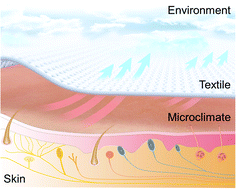Smart textiles for personalized thermoregulation
Abstract
Thermoregulation has substantial implications for human health. Traditional central space heating and cooling systems are less efficient due to wasted energy spent on the entire building and ignore individual thermophysiological comfort. Emerging textiles based on innovations in materials chemistry and physics, nanoscience, and nanotechnology have now facilitated thermoregulation in a far more personalized and energy-saving manner. In this tutorial review, we discuss the latest technological advances in thermoregulatory textiles. First, we outline the basic mechanisms behind the physiological chemistry processes for both internal and external thermoregulation in the human body. Then, we systematically elaborate on typical smart passive and active thermoregulatory textiles considering current working mechanisms, materials engineering towards practical applications. In light of burgeoning commercial trends, we offer important insights into green chemistry for the sustainable development of smart thermoregulatory textiles. Prospectively, we propose an autonomous textile thermoregulation system that could intelligently provide personalized thermophysiological comfort in a self-adaptive manner in the era of Internet of Things (IoT). The discussion of interdisciplinary interactions of energy, environmental science, and nanotechnology in this review will further promote development of the thermoregulatory textile field in both academia and industry, ultimately realizing personalized thermoregulation and a sustainable energy future.

- This article is part of the themed collection: 2020 Emerging Investigators


 Please wait while we load your content...
Please wait while we load your content...